Entertaining Angels
19 posts •
Page 1 of 1
Entertaining Angels
Ever notice how popular angels have become? Just about everyone's seen those "Angel in your Pockets" and other angelic motiffs everywhere. Even Raphael and Michaelanglo painted angels in their stuff. And in anime, nine times out of ten if they're going to throw in a christian refrence, it's going to be a mention of an angel.
My question is, why is everyone so fascinated with angels, believers and unbelievers alike? And especially the anime world? Of all the Christian icons to pick up on, why did they seize so strongly on angels?
My question is, why is everyone so fascinated with angels, believers and unbelievers alike? And especially the anime world? Of all the Christian icons to pick up on, why did they seize so strongly on angels?
-
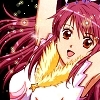
Ashley - Posts: 7364
- Joined: Mon May 26, 2003 10:00 am
- Location: Fort Worth, Texas
I suppose it's one of the friendlier things to pick up on. God really doesn't have much of an image (aside from pictures of Yeshua/Jesus).
The cross is another image that is picked up some, but while that's a traditional Christian symbol, it's really not that friendly (so to speak)... it's a nasty, bloody thing really (and it's really a Roman thing at that!).
I think Angels aren't unique to our religious believe system either.... aren't angels and demons part of some of the eastern religions?
I read something similar a while back somewhere (newsgroups?) at the peak of "Touched by an Angel," I think Xena was still on at the time... don't remember much about it, maybe the message is still in the Newgroup archives.
PHIL
The cross is another image that is picked up some, but while that's a traditional Christian symbol, it's really not that friendly (so to speak)... it's a nasty, bloody thing really (and it's really a Roman thing at that!).
I think Angels aren't unique to our religious believe system either.... aren't angels and demons part of some of the eastern religions?
I read something similar a while back somewhere (newsgroups?) at the peak of "Touched by an Angel," I think Xena was still on at the time... don't remember much about it, maybe the message is still in the Newgroup archives.
PHIL
-

madphilb - Posts: 1057
- Joined: Thu May 29, 2003 1:46 pm
- Location: Sunny St. Pete, FL
while browsing on the net one day.....
http://sd.essortment.com/animejapanchri_rfdy.htm
...............
Some Hebrew social traditions also may have found their way into Japanese culture, such as bowing as a form of greeting, the imagery of mountains as holy places of enlightenment and spiritual discovery, similar styles of folk-dancing amongst both Hebrew and Japanese peoples, and the sowing of salt before an important (or religious) undertaking as a symbol for purification. Not to mention the similarities between the royal crest of the Japanese imperial family carrying the exact same design as the seal over Herrod's Gate in Jerusalem (one of the most important entrances to the holy city).
With all of these findings to consider, one can easily see why the influence of Jewish mysticism is so strong in Japanese anime. And the introduction of Christianity to Japan in 1549 by Jesuit Francis Xavier, and its reintroduction in 1859 after Japan's two centuries of seclusion, has also served its part in shaping the religious and social lives of the Japanese. Although true freedom of religion did not show itself in Japan until the Allied occupation in 1945, it has long been the nature of Shinto to tolerate and even absorb certain aspects of other religions(3). Shinto-ized versions of Christian angels and demons have found their way into Japanese art and story. Naturally, with the strong apocalyptic tendencies of Japanese entertainment, one can see how the Christian idea of angels as saviors, while also being juxtaposed as the bringers of Armageddon, would be a fascinating subject for the Japanese. One example can be found in "Wish," a Japanese manga by the leading female artist group CLAMP, which tells the story of a young angel, Kohaku, sent to earth to find another missing angel, Hisui. While these angels are depicted in the traditional Christian manner (white wings, halos, white robes, etc…) they are assigned very pagan roles. There are four archangels, but they are not the typical four found in Christian mythology, instead they are given Japanese names, and represent the elements of nature: fire, wind, water, and earth. Kohaku himself represents a fifth element, that of spirit, and he is assigned with the role of "hatching" new angels from the "tree of life," (possibly a Qabbalistic association with Jewish mysticism). Coincidentally, God's "messengers" are hares, a traditional Shinto myth animal-association with communication, sending warnings or messages.
............................
...............
Some Hebrew social traditions also may have found their way into Japanese culture, such as bowing as a form of greeting, the imagery of mountains as holy places of enlightenment and spiritual discovery, similar styles of folk-dancing amongst both Hebrew and Japanese peoples, and the sowing of salt before an important (or religious) undertaking as a symbol for purification. Not to mention the similarities between the royal crest of the Japanese imperial family carrying the exact same design as the seal over Herrod's Gate in Jerusalem (one of the most important entrances to the holy city).
With all of these findings to consider, one can easily see why the influence of Jewish mysticism is so strong in Japanese anime. And the introduction of Christianity to Japan in 1549 by Jesuit Francis Xavier, and its reintroduction in 1859 after Japan's two centuries of seclusion, has also served its part in shaping the religious and social lives of the Japanese. Although true freedom of religion did not show itself in Japan until the Allied occupation in 1945, it has long been the nature of Shinto to tolerate and even absorb certain aspects of other religions(3). Shinto-ized versions of Christian angels and demons have found their way into Japanese art and story. Naturally, with the strong apocalyptic tendencies of Japanese entertainment, one can see how the Christian idea of angels as saviors, while also being juxtaposed as the bringers of Armageddon, would be a fascinating subject for the Japanese. One example can be found in "Wish," a Japanese manga by the leading female artist group CLAMP, which tells the story of a young angel, Kohaku, sent to earth to find another missing angel, Hisui. While these angels are depicted in the traditional Christian manner (white wings, halos, white robes, etc…) they are assigned very pagan roles. There are four archangels, but they are not the typical four found in Christian mythology, instead they are given Japanese names, and represent the elements of nature: fire, wind, water, and earth. Kohaku himself represents a fifth element, that of spirit, and he is assigned with the role of "hatching" new angels from the "tree of life," (possibly a Qabbalistic association with Jewish mysticism). Coincidentally, God's "messengers" are hares, a traditional Shinto myth animal-association with communication, sending warnings or messages.
............................

-
WhiteÃ…ngel - Posts: 158
- Joined: Thu May 29, 2003 11:00 am
- Location: Just this side of Heaven
Yeah, the Qabbalah (sp????!?!)/Tree of Life is some sort of Jewish thing. I've seen it in Neon Genesis Evangelion(as a matter of fact it's in the opening sequence). It's supposed to be some sort of...like, path you follow to be like God. There are spheres, called the Sephiroth, they all like...represent different virtues and such. I have a Jewish friend who knows more than I do, perhaps I could ask him about it if y'all want to know more.
Anyway...see...since the Japanese are so open-minded....The opportunity to minister is just....man, I can't believe more people aren't going over there to evangelize. Maybe that's our job with the anime...?
Anyway, I dunno why angels are so popular. I guess because of the element of mystery...? How elegant they seem? The Bible describes them but not that clearly. Personally I don't think they're winged humanoids...but hey, I could be wrong and I guess we'll find out eventually
Anyway...see...since the Japanese are so open-minded....The opportunity to minister is just....man, I can't believe more people aren't going over there to evangelize. Maybe that's our job with the anime...?
Anyway, I dunno why angels are so popular. I guess because of the element of mystery...? How elegant they seem? The Bible describes them but not that clearly. Personally I don't think they're winged humanoids...but hey, I could be wrong and I guess we'll find out eventually

fightin' in the eighties
-

ShiroiHikari - Posts: 7564
- Joined: Wed May 28, 2003 12:00 pm
- Location: Somewhere between 1983 and 1989
I have something buried in my spiritual area of "things to come" -- witnessing in Japan is one of them.
-

Straylight - Posts: 2346
- Joined: Mon May 26, 2003 12:00 pm
- Location: Manchester, UK
Eh..I think the Kabbalah is considered heretical by most Jews, at least the ones that follow Judaism directly(the teachings of the Old Testement and all that).
I'm not really knowledgeable on the subject though.
I'm not really knowledgeable on the subject though.
-----------------------------------------
"Always seek to do good to one another and to all."
1 Thessalonians 5:15
"Every story must have an ending." - Auron - Final Fantasy X
"A small stone may make a ripple at first, but someday it will be a wave." - Wiegraf - Final Fantasy Tactics
"Always seek to do good to one another and to all."
1 Thessalonians 5:15
"Every story must have an ending." - Auron - Final Fantasy X
"A small stone may make a ripple at first, but someday it will be a wave." - Wiegraf - Final Fantasy Tactics
-

MasterDias - Posts: 2714
- Joined: Tue Jun 03, 2003 4:56 pm
- Location: Texas
Originally posted by MasterDias
I'm not really knowledgeable on the subject though.
Me neither man.
fightin' in the eighties
-

ShiroiHikari - Posts: 7564
- Joined: Wed May 28, 2003 12:00 pm
- Location: Somewhere between 1983 and 1989
God gave us an imagination, and the knowledge that their are Angelic beings is intriguing. Especially since they must have free will and names like us. ^^ ( Lucifer is an example... ) -and the fact WE will judge the Angels is something that interest me. Why would God have us judge the Angels? -and how can we actually "judge" them?
I can get scripture references if you want. n.n
...Then there's my big idea: Wings are cool 8D
I can get scripture references if you want. n.n
...Then there's my big idea: Wings are cool 8D





-
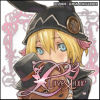
Song_of_Storms - Posts: 473
- Joined: Thu Jan 24, 2008 1:46 pm
- Location: Alabama~
Whoa.
Extreme gravedig. I guess it's still open for discussion, though. XD;
Extreme gravedig. I guess it's still open for discussion, though. XD;
[color="DeepSkyBlue"]4 8 15 16 23[/color] 42
[color="PaleGreen"]Rushia: YOU ARE MY FAVORITE IGNORANT AMERICAN OF IRISH DECENT. I LOVE YOU AND YOUR POTATOES.[/color]
[color="Orange"]WELCOME TO MOES[/color]

-

Radical Dreamer - Posts: 7950
- Joined: Sat May 28, 2005 9:00 am
- Location: Some place where I can think up witty things to say under the "Location" category.
-
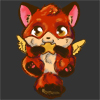
ChristianKitsune - Posts: 5420
- Joined: Mon Mar 14, 2005 12:00 pm
- Location: In my sketchbook of wonderment and puffy pink clouds! *\^o^/*
i believe it was gravedug before by a bot/troll whose post was removed...thus it stayed closer to more recent topics.  I'm pretty sure this was one of the 2-3 topics that had been majorily gravedug by it.
I'm pretty sure this was one of the 2-3 topics that had been majorily gravedug by it.
 I'm pretty sure this was one of the 2-3 topics that had been majorily gravedug by it.
I'm pretty sure this was one of the 2-3 topics that had been majorily gravedug by it.:angel:
[color=DeepSkyBlue] "He lives in you. He lives in me. [/color]He watches over everything we see.
Into the water. Into the truth. [color=Yellow][color=DeepSkyBlue]In your reflection, He lives in you." - He lives in you chorus[/color][/color]
"Slow, love, slow. Time's so fast. Now goes quickly, see Now it's past!
Soon will come, Soon will last. Wait." [color=Yellow]- Wait (sweeney todd) [/color]
Into the water. Into the truth. [color=Yellow][color=DeepSkyBlue]In your reflection, He lives in you." - He lives in you chorus[/color][/color]
"Slow, love, slow. Time's so fast. Now goes quickly, see Now it's past!
Soon will come, Soon will last. Wait." [color=Yellow]- Wait (sweeney todd) [/color]
[align=center]My art page.
[align=center]Married to swordguy


[/align]
[/align]
-

bakura_fan - Posts: 1289
- Joined: Tue Jun 29, 2004 12:00 pm
- Location: @ the mother-in-laws. ^_^
ShiroiHikari (post: 1049) wrote:There are spheres, called the Sephiroth, they all like...represent different virtues and such.
SEPHIROTH?!?! *burns in anger* hmmm wonder if the creators of FFVII knew this when they created the game? *wonders*
But seriously I agree with everyone else about the fact that "angels" are one of the more "friendly" objects in Christianity. However it's become kind of much.....I think they are being "objectified" which is just .... lame. Especially since they were God's first true warriors!!
Status: Lurker.... but I'll be around.
~ The fainter the heartbeat the stronger the soul~
*They're just an incomplete group of people wishing to be whole; and to that end, they're desperately searching for something.* - Namine (Kingdom Hearts 2)
~ The fainter the heartbeat the stronger the soul~
*They're just an incomplete group of people wishing to be whole; and to that end, they're desperately searching for something.* - Namine (Kingdom Hearts 2)
-

animewarrior - Posts: 517
- Joined: Sun Nov 19, 2006 7:49 pm
- Location: ~Twilight Wonderland~
Um, actually they are called SERAPHIM,(sometimes serafim) not Sephiroth.
"Before I formed you in the womb I knew you, and before you were born I consecrated you. I appointed you to be a prophet of all nations."
--Jeremiah 1:5

Hit me up on social media!
https://www.facebook.com/profile.php?id=100007205508246<--Facebook
I'm also on Amino as Radical Edward, and on Reddit as Rocklobster as well.
click here for my playlist!
my last fm profile!
--Jeremiah 1:5
Hit me up on social media!
https://www.facebook.com/profile.php?id=100007205508246<--Facebook
I'm also on Amino as Radical Edward, and on Reddit as Rocklobster as well.
click here for my playlist!
my last fm profile!
-

rocklobster - Posts: 8903
- Joined: Mon Dec 20, 2004 1:27 pm
- Location: Planet Claire
rocklobster (post: 1231796) wrote:Um, actually they are called SERAPHIM,(sometimes serafim) not Sephiroth.
Actually, if you check the Wikipedia article about Kabbalah (which is what was being discussed), the term is "sephirot" (plural "sefirah"). You are, however, correct when speaking of "normal" Judeo-Christian angels.
.rai//
[raiden's liveJournal]
[color="Indigo"]"I believe whatever doesn't kill you simply makes you . . . stranger."[/color]
Strollin' in at dawn, wakin' up at noon's gonna catch up to me soon
'Just sleep when you're dead' is what I said 'cause I'm jumpin' off the moon
[color="Indigo"]"I believe whatever doesn't kill you simply makes you . . . stranger."[/color]
Strollin' in at dawn, wakin' up at noon's gonna catch up to me soon
'Just sleep when you're dead' is what I said 'cause I'm jumpin' off the moon
-

Raiden no Kishi - Posts: 2518
- Joined: Fri Apr 09, 2004 10:45 am
- Location: Ticking away/The hours that make up the dull day . . .
Why is it that most people who are not Christians have a picture of an angel as a female? They are androgenous as far as I know, leaning towards male, I thought?
"I've learned when you throw mud at others, not only do you get your hands dirty, but you also lose a lot of ground." Ravi Zacharias
"Pride grows in the human heart like lard on a pig." Aleksander Solzhenitzen (so call me on it)
"Zeal without knowledge can lead to chaos." - Bob Rohm
"Why don't we love his truth as much as we seem to love his love?"- Cross Movement, in their song "Check us Out"
"Pride grows in the human heart like lard on a pig." Aleksander Solzhenitzen (so call me on it)
"Zeal without knowledge can lead to chaos." - Bob Rohm
"Why don't we love his truth as much as we seem to love his love?"- Cross Movement, in their song "Check us Out"
-

oro! - Posts: 991
- Joined: Sun Sep 12, 2004 10:00 am
- Location: in my dorm
I don't know... But I believe angels do have genders, actually. I mean, the Bible describes the angels in Jesus' tomb after the ressurection as men. So I imagine there are at least guy angels.
As far as girl angels, of course they exist. They make up like half the population on earth.
As far as girl angels, of course they exist. They make up like half the population on earth.

-
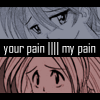
Prince Asbel - Posts: 588
- Joined: Tue Apr 01, 2008 8:26 pm
- Location: West Virginia. No, I am not a country hick.
I guess they could be female if they wanted to, but the only examples we have are of them appearing as men.
Fanfiction (updated 1/1/11)-- Lucky Star--Ginsaki ch. 4
[color="Magenta"]Sometimes I post things.[/color]



[color="Magenta"]Sometimes I post things.[/color]



-

LadyRushia - Posts: 3075
- Joined: Mon Aug 06, 2007 8:38 pm
- Location: In a dorm room/a house.
Angels give people the benefits of believing in something greater than themselves but without the responsibility of believing in an all powerful God who recognises us as fallen and wants us to change our ways.
-

Warrior 4 Jesus - Posts: 4844
- Joined: Tue Sep 07, 2004 10:52 pm
- Location: The driest continent that isn't Antarctica.
well, let's not forget about the Nephilim, who were the offspring of matings between the "sons of God" and the "daughters of men"... and there is great speculation that the sons of God were angels... so yeah, there MUST be some genders in there, somewhere...
http://myspace.com/shura_no_hana
XBox Gamertag: NekoChan Cruz
PSN Gamer ID: Neko no Ichi
http://neko-chan-cruz.livejournal.com/
XBox Gamertag: NekoChan Cruz
PSN Gamer ID: Neko no Ichi
http://neko-chan-cruz.livejournal.com/
-
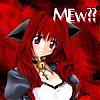
NekoChan_C - Posts: 313
- Joined: Wed Apr 09, 2008 7:13 am
- Location: Tampa
19 posts •
Page 1 of 1
Who is online
Users browsing this forum: No registered users and 325 guests




